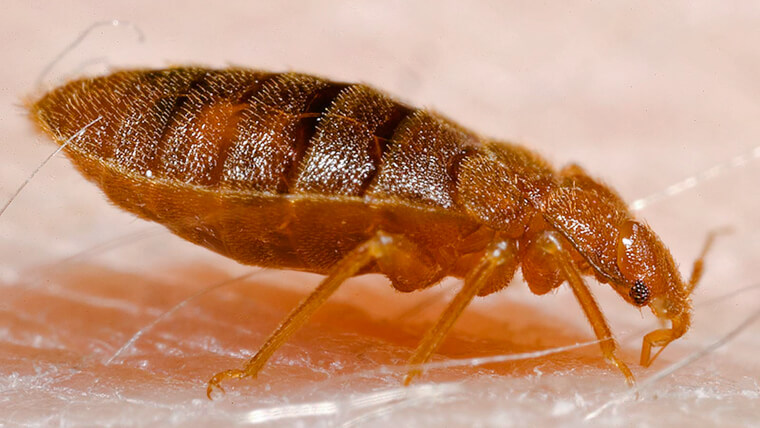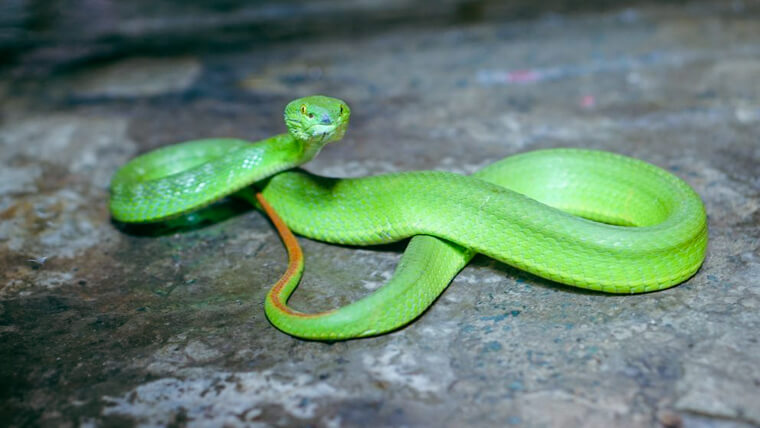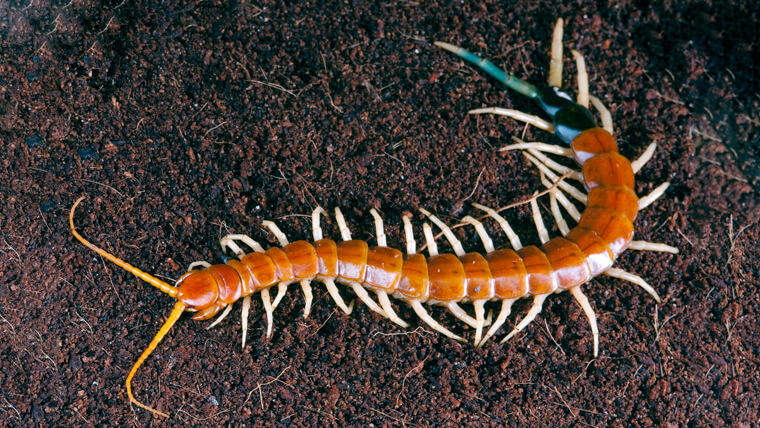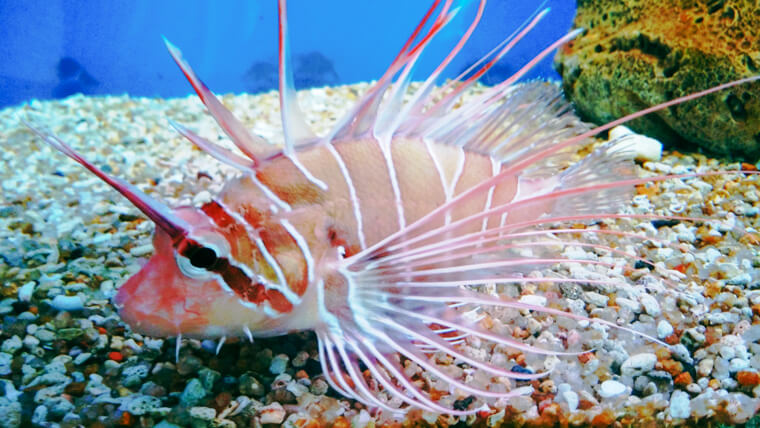Are there any dangerous animals in Vietnam? Vietnam is long well-known for its diversity of fauna, many of which are listed in the top list of the most deadly animals nationally, which can have a negative effect on your health, even your lives. On the way to travel to Vietnam, it is advisable for you to be aware of these species to avoid unexpected situations.
Top 7 dangerous animals in Vietnam: Mosquitos
Mosquitos are the main vector of infectious diseases such as dengue fever, malaria, and Zika fever, etc. Vietnam is a tropical country with high rainfall in September and October, entailing the high humidity, which is a favorable environment for mosquitos' development. These dangerous animals of Vietnam usually live in stagnant ponds, water containers, moving water, wardrobes, bed slats, or cabinet slats.
There are three main types of mosquitos in Vietnam: aedes mosquitoes, anopheles mosquitoes, and culex mosquitoes. They are dangerous animals in Vietnam which can lead to many dangerous symptoms such as high fever, headache, convulsions, and deep coma. In particular, Anophen mosquitoes transmit malaria, Aedes mosquitoes are the chief cause of dengue fever, hepatitis B, and zika virus, Culex mosquitoes trigger Japanese encephalitis.
Fleas

Fleas in Vietnam - Source: dietcontrungtphcm.net
Fleas are small, wingless blood-sucking insects, which mainly feed on animal blood. The most outstanding examples of this species of dangerous animals in Vietnam are the rat fleas, the human fleas, and the cat fleas. Their stings can lead to irritation, discomfort, and blood loss. Particularly, rat fleas are the main vector of plague and typhus, and cat fleas are the carriers of tapeworms. Fleas are mostly found in the fluff and furs of animals, in human beds and clothes. They move by jumping, some species can jump up to 30cm.
- You may need: Is it safe to travel to Vietnam?
Humans are most often bitten by cat fleas, then dog fleas, and human fleas, which can lead to allergies and dermatitis. The more serious consequence of fleas is that it can transmit plague bacteria to humans, which causes the plague “Black Death”, the catastrophic outbreaks in the past.
Top 7 dangerous animals in Vietnam: Venomous snakes
Vietnam has many types of venomous snakes, some of which can be mentioned as:
Red-tailed vipers or Trimeresurus albolabris

Red-tailed viper - Source: nguoiduatin.vn
Red-tailed viper is a scaly species of snake in Vietnam which has a scientific name of Trimeresurus albolabris with a length of about 60 to 100cm and a weight of about 300gr, characterized by green body and reddish-brown tail. They usually reside on the ground and rest in trees during the day. This species can be found in mountainous areas and forests in Truong Son mountain range, the Northwest of Vietnam, some in the province of Can Tho, Quang Ngai, and Nghe An,...
Because the vision of these dangerous animals in Vietnam is very poor during the daytime, they often go out to hunt at night. This is a ferocious and extremely poisonous snake among vipers species. If bitten by this species, the poison with more than 20 deadly components will be transmitted to the body of the victim, leading to hemolysis, edema, neurotoxicity, or even heart failure.
Azemiops feae
This is one in a few species of viper living at a height of about 1,000m above sea level, commonly found in Fansipan mountain and other mountainous areas in the provinces of Cao Bang, Lang Son, and Vinh Phuc. The species of dangerous animals in Vietnam is ranked as in the top 60 most venomous ones in Vietnam, which can produce neurotoxins and cytotoxins, extremely dangerous to humans.
The most bizarre and terrifying feature of this 80cm long species is its silver-white head and red-black bands on the body. On the head, there are two large black lines running vertically, symmetrically through a pink-white line.
Horned viper snake - top dangerous animals in Vietnam
Horned viper or Trimeresurus cornutus has other names such as Devil snake and Satanic snake because of its scary appearance. This is one of the most deadly snakes in Vietnam, which has unique features. They have scales on their eyelids developing into a pair of horns, which makes the head a strange shape. The head of the snake has a triangular shape, the eyes are small and convex. The average length is about 50cm, featuring brownish - gray with dark symmetrical patterns which closely resemble the color of dead branches and rotting leaves.
These dangerous animals in Vietnam appear in several places such as Sapa Town (Lao Cai Province), Bach Ma National Park (Hue City), Phong Nha - Ke Bang National Park (Quang Binh Province), and recently in Cuc Phuong National Park (Ninh Binh Province). This species is usually found in the lush rainforests, limestone mountains, and granite outcrops.
King Cobra
King cobra is the world’s longest venomous snake and is a dangerous species, which is up to 5 to 5.5m and 9 to 12.5kg heavy. Its skin color is different depending on its natural habitat, the skin from the head to the back varies from black, tan, olive-brown to brownish-grey or brownish - white. The belly part of these dangerous animals in Vietnam is pale yellow with fine scales, the neck is bright yellow. The upper jaw features a pair of fangs helping it capture prey and inject the venom. The neck is characterized by folds of loose skin on both sides, helping it to stretch to the sides. The eyes of this species are very bright, making it observe the prey from about 100m away. Although it does not have external ears to hear, it can still receive the sound through extremely sensitive skin.
The venom of the king cobra is a group of neurotoxins, which is incredibly murderous to victims, causing serious consequences such as blurred vision, drowsiness, eye sore, dizziness, paralysis, respiratory failure, kidney failure, or even death after about 30 minutes.
Top dangerous animals in Vietnam: Sea snake
Sea snakes usually live in muddy areas in the bottom of the sea, around islands and estuaries. They have a small head and eyes, a slightly flattened body, a flattened tail, and the nostrils which move up to the tip of the snout. The toxins of this species of dangerous animals of Vietnam can cause serious consequences to circulation and nervous systems, which can destroy muscle cells, leading to paralysis of the respiratory muscle, even death.
If bitten by this species of dangerous animals in Vietnam, you will not feel pain at first, just a mild pain and itching at the bite site. But after that, numerous symptoms appear such as muscle pain, tongue numbness, sweating, dysphagia, muscle paralysis, shortness of breath, dilated pupils, cold skin, respiratory paralysis, coma, and finally death.
The largest number of sea snakes is distributed in the Central region of Vietnam such as Binh Thuan Province, Ninh Thuan Province, Khanh Hoa Province, Quang Nam Province, Quang Binh Province, and Nghe An Province, etc.
Top most dangerous animals in Vietnam: Vietnam Centipede

Centipedes - Source: vnexpress
Centipedes are elongated, multi-legged animals and each segment has a pair of legs. Depending on each species, the number of legs varies from less than 20 to over 300 legs. Their habitat is dark and damp places such as water pipes, floors, and drains. Adult centipedes are black or reddish-brown. If centipedes bite, the poison will be secreted from their two front teeth, its venom can cause swelling and pain. Seriously, victims can experience several symptoms such as dizziness, convulsions, vomiting, even the nervous system can be paralysed.
Jellyfish
Jellyfish are one of the most dangerous animals in Vietnam. Some of the most venomous ones that can be found in Vietnam are:
Fire jellyfish/ red jellyfish/ Physalia physalis
Physalia physalis features a long, thin body like “green plastic bottles”, which is transparent, making it very difficult to detect. They have tentacles containing iridescent venom which can be blue, pink, purple, or orange. Its venom is very strong, which can lead to wound necrosis and stimulate the release of histamine very quickly, triggering anaphylactic shock.
If stung by these dangerous animals in Vietnam, it can result in burning sensation, burning pain, body numbness, muscle weakness, sweating, fever and nausea, dizziness, shortness of breath, and kidney failure. This species is commonly found in the Northern seas like in Mong Cai City of Quang Ninh Province and Cat Ba Island; therefore, you should limit bathing in the area having many jellyfish to avoid the risk of touching it.
Wasp jellyfish/ Chironex fleckeri
This species can be found in the coastal waters of Vietnam, especially when the weather is bad and cloudy, they usually move to shallow water, near the shore. Its body is transparent blue, mixing with the color of the sea, making it very difficult to recognize. These dangerous animals in Vietnam are boxy, 2 to 20cm long and round like an upside down pot with 15 long tentacles and thousands of nematocysts containing venom, capable of attacking the cardiovascular system, peripheral nervous system and epidermis, which can cause cardiac arrest, leading to death. It is advisable for you to swim after storms, in the rainy season, high tide, and cloudy days.
Blue-ringed octopus
Blue-ringed octopus or Tetrodotoxin is commonly seen in the reefs in the shallow water in Binh Thuan Province, Khanh Hoa Province, and Con Dao Island. It is quite small with a length of 12 to 20cm, narrow head, and its body and arms feature bright blue circles, which will be vivid when it is irritated or threatened. These dangerous animals in Vietnam are on the top of venomous octopus species in the world. It has a beak, which can sting through the skin and spit venom. This is the only marine animal which is dangerous for people through contact and ingestion.
In particular, many people died because they mistook it for the squid. If victims touch the face of this species, it can cause heart failure, and die immediately. When stung, the victim will feel a slight discomfort in the skin, then many increasingly serious symptoms appear such as red streaks, tightness, numbness, burning of lips, mouth, muscle paralysis spreading down, stomach cramps, vomiting, dizziness, headache, and sweating, stiff tongue, loss of mobility, cardiovascular collapse and death.
Top dangerous animals in Vietnam: Red lionfish

Red lionfish is also known as Pterois volitans - Source: wikipedia.com
Red lionfish have many different names such as zebrafish, turkeyfish, butterfly-cod, peacock lionfish, red firefish, or volitans, etc, which is relatively rare in Vietnam. They mostly live in coral reefs in the waters of Vietnam, which is outstanding with its colorful, beautiful, long and spreading fins which are actually huge poisonous spines, helping the fish thwart potential predators in the wild. The venom of these dangerous animals of Vietnam is released from 18 needle-like dorsal fins, which causes pain in the biting site and leads to some symptoms such as nausea, the shortness of breath, but the low chance of fatality.
There are the most dangerous animals in Vietnam, each of which has different characteristics and effects on both nature and humans' health, so you should be careful of these species to protect yourself and others during your tours to Vietnam. If you would like to get more details about other species in Vietnam in particular and travel in Vietnam in general, do not hesitate to follow and accompany us to discover the amazing country via our website Local Travel Idea.







.jpg) — Ha Bich
— Ha Bich




































